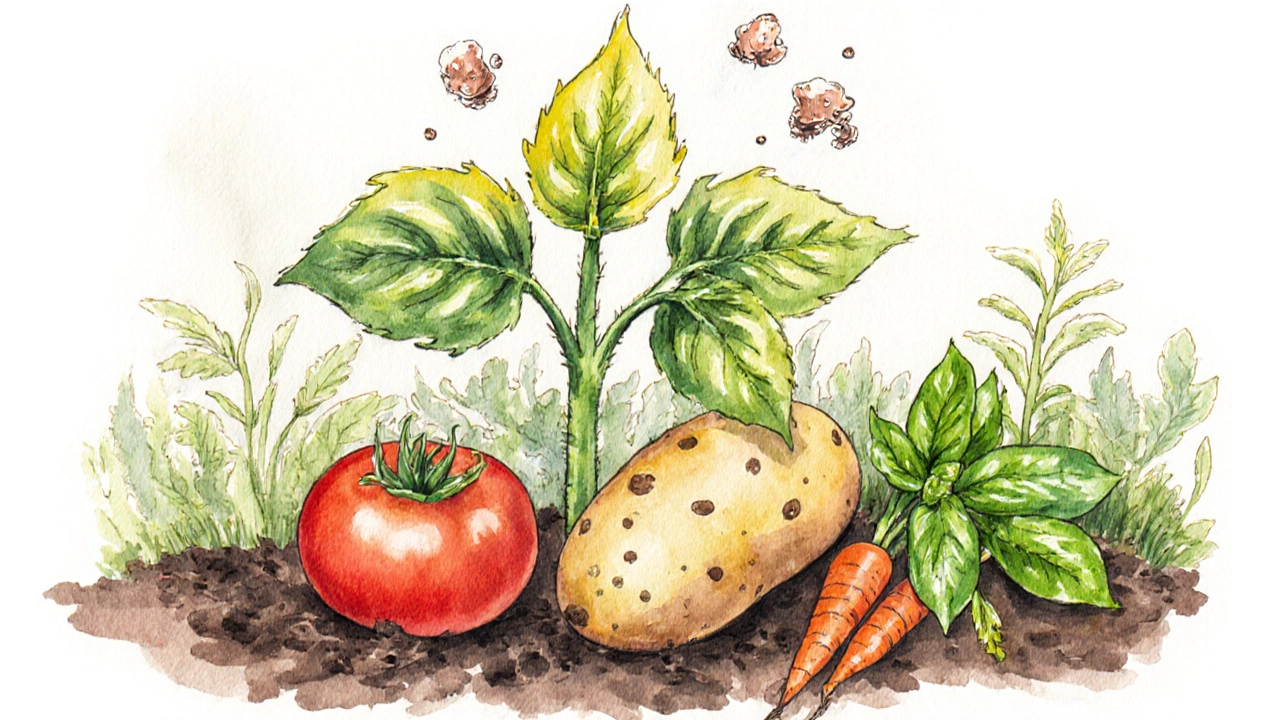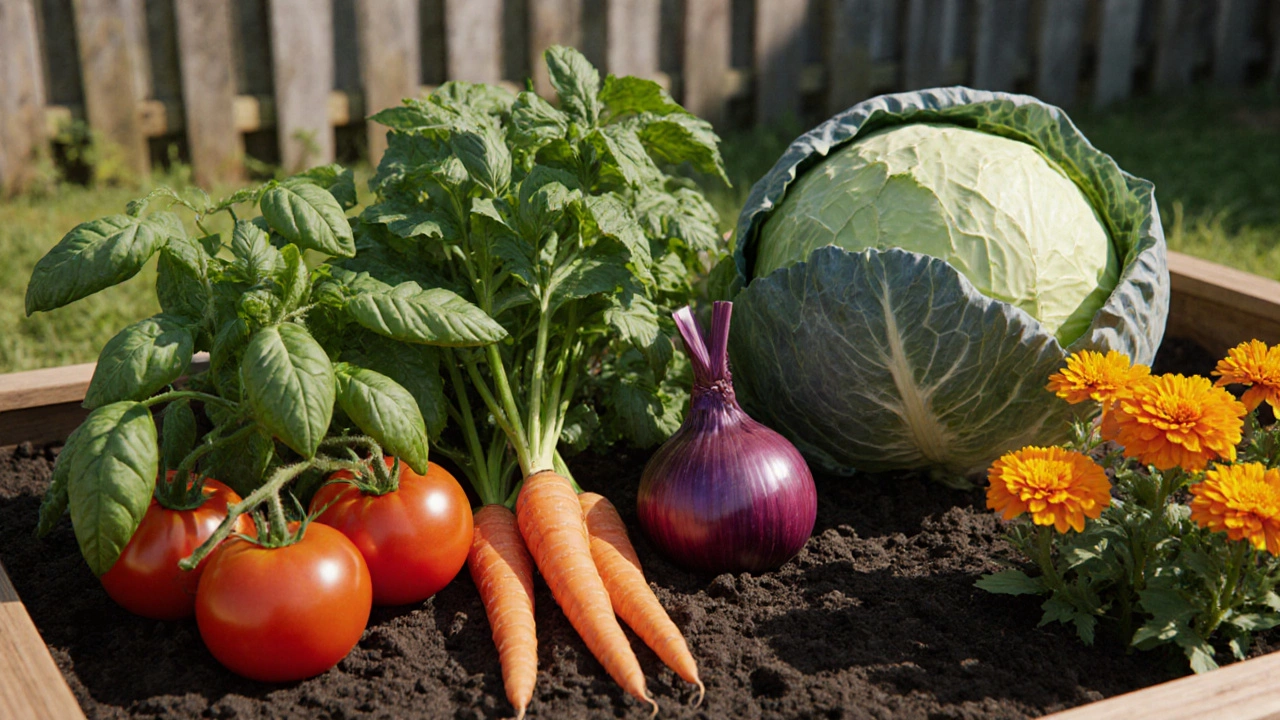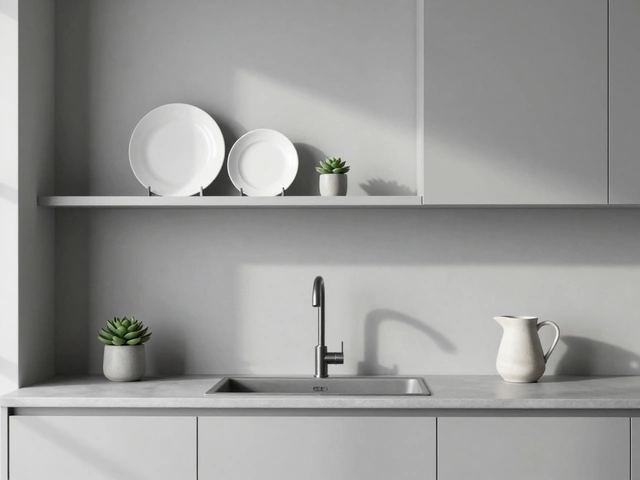Ever wondered why some veggies seem to thrive when they’re side‑by‑side while others wilt? The answer lies in vegetable pairing - the art of matching plants that help each other grow. Below you’ll find a practical companion planting guide that tells you exactly which vegetables can share a bed and which combos should stay apart.
What is Companion Planting?
Companion planting is a gardening practice of pairing compatible plants to boost growth, deter pests, and improve flavor. By understanding each plant’s needs and natural defenses, you can create a mini‑ecosystem that works without chemicals.
Why Pair Plants? The Core Benefits
- Natural pest control: Certain aromas repel insects, reducing the need for sprays.
- Improved soil health: Legumes fix nitrogen, enriching the soil for heavy feeders.
- Better use of space: Vertical growers like beans climb on sturdier neighbors, maximizing limited garden area.
- Enhanced flavor: Some pairings are said to boost taste, especially in tomatoes and basil.
Top Good Pairings
Here are the classic win‑win combos that most gardeners swear by.
| Primary Vegetable | Companion | Benefit |
|---|---|---|
| Tomatoes - a sun‑loving fruit | Basil | Improves flavor and repels whiteflies. |
| Carrots | Onions | Onion scent deters carrot flies. |
| Cabbage | Marigold | Marigold releases nematicides that protect roots. |
| Beans | Potatoes | Beans fix nitrogen for the heavy‑feeding potatoes. |
| Lettuce | Radish | Radish loosens soil, helping lettuce establish shallow roots. |

Pairs to Avoid
Even well‑meaning gardeners can sabotage a crop by planting the wrong neighbor. Below is a quick “no‑go” list.
| Vegetable A | Vegetable B | Reason to Separate |
|---|---|---|
| Tomatoes | Potatoes | Both attract the same blight, spreading disease faster. |
| Cabbage | Strawberries | Both compete for the same soil nutrients. |
| Carrots | Dill | Dill can stunt carrot growth and attract carrot flies. |
| Beans | Garlic | Garlic releases compounds that inhibit nitrogen‑fixing bacteria in beans. |
How to Plan Your Bed: A Step‑by‑Step Checklist
- Sketch a rough layout of your garden space. Note sun exposure, wind direction, and soil type.
- List the veggies you want to grow this season. Prioritize the ones you love most.
- Match each vegetable with its top three companions using the tables above.
- Group compatible plants together, leaving a 12‑inch buffer between antagonistic pairs.
- Consider plant height: taller crops (beans, tomatoes) should be placed on the north side to avoid shading shorter greens.
- Plant nitrogen‑fixing legumes (beans, peas) early, then rotate them with heavy feeders later in the season.
- Water consistently, but avoid overhead sprays that can wash away protective scents.
Seasonal Tips for Sydney Gardens
Living in Sydney means mild winters and warm summers, which opens a long planting window. Here’s what to keep in mind:
- Autumn (March‑May): Ideal for planting garlic, onions, and brassicas. Pair them with marigolds to fend off nematodes.
- Winter (June‑August): Sow hardy lettuce, spinach, and peas under cover. Use beans as a winter cover crop for soil nitrogen.
- Spring (September‑November): Warm‑weather veggies like tomatoes, cucumbers, and beans thrive. Plant basil near tomatoes for that classic flavour boost.
- Summer (December‑February): Keep water lines short to avoid fungal diseases. Rotate fast‑growing radishes with slower lettuce to keep soil loose.
Common Mistakes and How to Fix Them
Even seasoned gardeners slip up. Spot the red flags early and correct them.
- Overcrowding: Dense plantings limit airflow, inviting mildew. Thin seedlings to the recommended spacing.
- Ignoring soil pH: Some combos, like beans and carrots, prefer slightly alkaline soil. Test your soil and amend with lime if needed.
- Planting at the wrong time: Tomatoes planted too early get frost‑damage. Use local frost dates (usually late August for Sydney).
- Forgetting crop rotation: Repeating the same family in the same spot depletes nutrients. Rotate legumes with leafy greens each year.
Quick Reference Cheat Sheet
| Vegetable | Best Companions | Bad Neighbors |
|---|---|---|
| Tomatoes | Basil, Marigold, Carrots | Potatoes, Cabbage |
| Carrots | Onions, Leeks, Lettuce | Dill, Parsley |
| Cabbage | Marigold, Dill, Nasturtium | Strawberries, Tomatoes |
| Beans | Corn, Squash, Potatoes | Garlic, Onion |
| Lettuce | Radish, Carrots, Chives | Broccoli, Cabbage |
Frequently Asked Questions
Can I plant tomatoes and basil in the same pot?
Yes. A large container (at least 12 inches deep) can hold a tomato plant with a few basil seedlings around the base. Basil’s scent helps repel spider mites and enhances tomato flavor.
Why do beans hurt garlic?
Beans release compounds that interfere with the growth of allium roots. Plant garlic on the opposite side of the bed or wait a full growing season before mixing them.
Is it okay to mix leafy greens with root vegetables?
Generally yes. Leafy greens like lettuce have shallow roots and won’t compete with deep‑rooted carrots or beets. Just keep them spaced to allow airflow.
How often should I rotate my companion plants?
Aim for a three‑year rotation. Move legumes to a new bed each year, and follow heavy feeders (tomatoes, cabbage) with nitrogen‑fixers (beans, peas).
Do I need to treat the soil differently for companion planting?
A well‑balanced compost mix works for most combos. If you’re pairing nitrogen‑hungry plants with legumes, you’ll see healthier growth without extra fertiliser.










